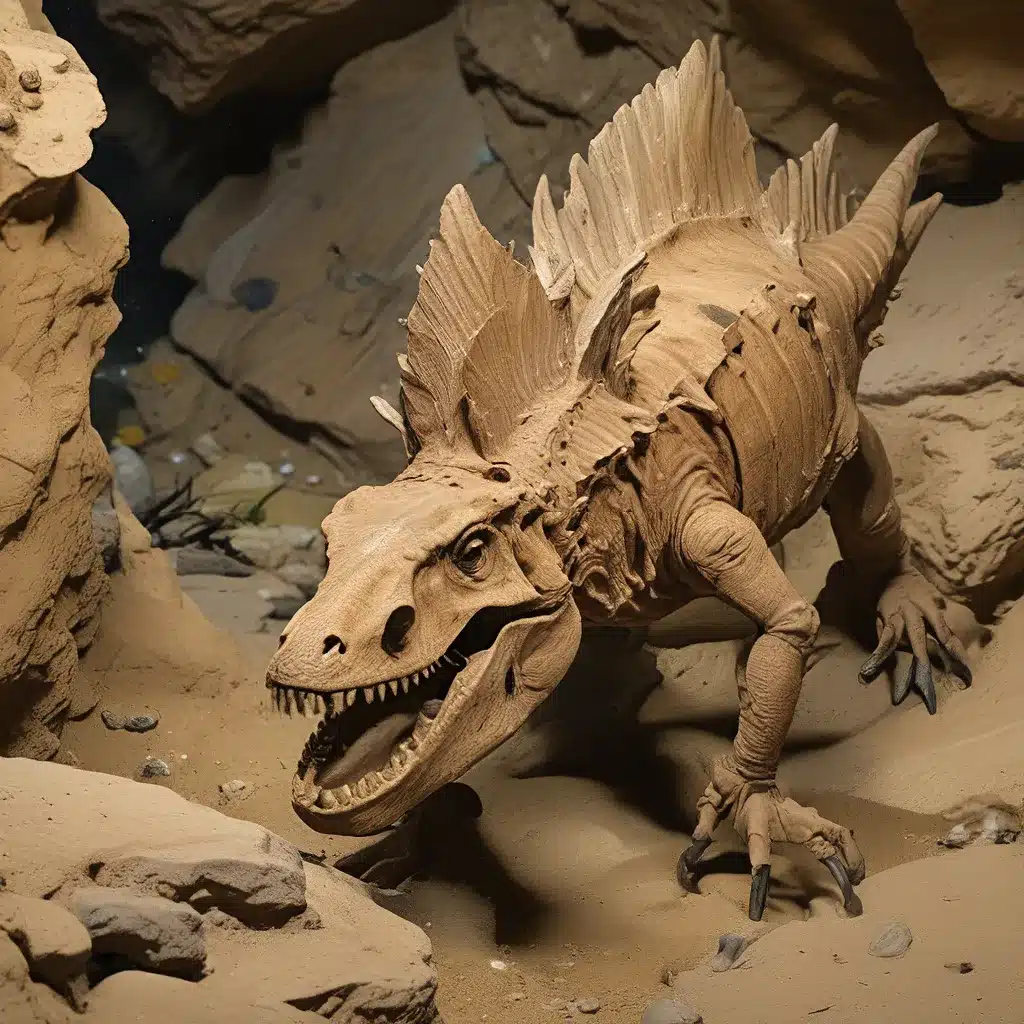
The field of paleontology has long captivated the imagination of scientists, historians, and the general public alike. From the unearthing of massive sea dragon fossils to the discovery of mastodon tusks in unexpected locations, the tales of these ancient finds continue to fascinate and inspire. In this article, we will explore the significant historical events, archaeological breakthroughs, and emerging theories that have shaped our understanding of the prehistoric world.
The Rise of Ichthyosaurs: Uncovering a Jurassic Apex Predator
One of the most remarkable paleontological discoveries in recent years has been the unearthing of a 33-foot fossil of a 180-million-year-old ichthyosaur in the UK’s Rutland Water Nature Reserve. These marine reptiles, which first appeared around 250 million years ago and went extinct approximately 90 million years ago, were known as the “sea dragons” of the Jurassic period.
The discovery of this exceptionally well-preserved specimen has been hailed as a “career highlight” for the conservation team leader, Joe Davis, who first spotted the exposed vertebrae while working on a routine re-landscaping project. The subsequent excavation, led by ichthyosaur expert Dean Lomax, has revealed the sheer scale and completeness of this remarkable find. The specimen’s head alone weighs a staggering one ton, making it one of the most significant ichthyosaur discoveries in the region.
As the excavation continues, researchers are eager to uncover more insights about this apex predator of the ancient seas. The discovery has the potential to shed light on the ichthyosaur’s diet, reproductive habits, and even potential physiological abnormalities. With the fossil undergoing a meticulous conservation process, the hope is that it will eventually be placed on public display, allowing visitors to marvel at this prehistoric marvel.
Diving into Mastodon Discoveries: Uncovering Prehistoric Treasures
While the unearthing of the massive ichthyosaur fossil has captivated the paleontological community, equally remarkable discoveries have been made in other parts of the world. One such example is the recent discovery of a 4-foot, 60-pound mastodon tusk off the coast of Venice Beach, Florida.
The tusk, which could be up to 1 million years old, was found by a pair of scuba divers, Blair Morrow and Alex Lundberg, who were exploring the waters off the Florida coast. The area surrounding Venice Beach is known for its abundance of shark teeth, but the divers were not prepared for the incredible find they were about to make.
As Lundberg described the moment of discovery, “I swim over to it and start fanning it, and all of a sudden, there’s a huge section of it exposed, and I’m just thinking to myself, ‘Oh my God, this is a tusk.'” The divers were able to carefully retrieve the tusk, which miraculously remained intact throughout the process.
This discovery highlights the ongoing potential for significant paleontological finds in unexpected places, even in well-explored regions. As Lundberg noted, “There is a whole other world down there,” hinting at the countless untapped treasures that may still be waiting to be discovered beneath the waves.
Unlocking the Mysteries of Ancient Civilizations
While the unearthing of fossils and prehistoric artifacts is undoubtedly exciting, the true value of paleontological and archaeological discoveries lies in their ability to unlock the mysteries of ancient civilizations. By carefully studying the remnants of these lost cultures, researchers can gain invaluable insights into the way of life, beliefs, and technological advancements of our ancestors.
One of the most captivating aspects of this field of study is the potential for unexpected discoveries that challenge our existing understanding of history. Take, for instance, the recent findings of a massive sea dragon fossil in the UK, which has been identified as a species of ichthyosaur previously unknown to have existed in the region.
These kinds of discoveries not only expand our knowledge of the prehistoric world but also force us to re-evaluate our assumptions about the development and migration patterns of ancient species. By delving deeper into the rich tapestry of the past, we can gain a more nuanced and comprehensive understanding of the complex relationships between various ancient cultures and their environments.
Emerging Theories and Future Trends in Paleontology
As the field of paleontology continues to evolve, researchers are grappling with a range of intriguing questions about the future of their discipline. One key concern is the potential for a slowdown in major archaeological and paleontological discoveries as more land is developed and accessible sites become scarce.
However, there is also the possibility that the rate of significant finds could actually increase as more scientists enter the field worldwide and new building projects uncover previously undisturbed areas. This dynamic interplay between the forces of development and scientific exploration is at the heart of the ongoing debate about the future trajectory of the field.
To better understand these trends, researchers have explored the potential of mathematical models similar to those used in “peak oil” theories, which attempt to predict the feasibility of future discoveries. While these models may not provide definitive answers, they can offer valuable insights into the potential challenges and opportunities that lie ahead for the paleontological community.
As we look to the future, it is clear that the excitement and wonder of paleontological discoveries will continue to captivate audiences around the world. From the unearthing of massive sea dragons to the rediscovery of long-lost civilizations, the stories of the past hold the power to inspire new generations of scientists, historians, and curious minds alike.
Ultimately, the field of paleontology serves as a bridge between the present and the distant past, allowing us to deepen our understanding of the natural world and our place within it. By continuing to explore the rich tapestry of our planet’s history, we can unlock the secrets of the ancient world and expand the frontiers of human knowledge.


